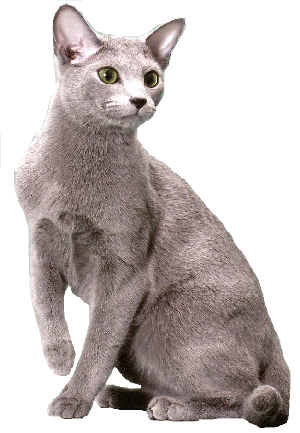Russian Blue: Difference between revisions
imported>Mary Ash No edit summary |
imported>Mary Ash No edit summary |
||
| Line 1: | Line 1: | ||
{{subpages}} | {{subpages}} | ||
{{Image|Russian Blue 001.gif|right|350px|Male Russian Blue cat.}} | |||
<!--Please ignore the following lines if you are not familiar with the usage of subpages at Citizendium.--> | <!--Please ignore the following lines if you are not familiar with the usage of subpages at Citizendium.--> | ||
Revision as of 19:17, 4 August 2010
The Russian Blue cat has a somewhat murky history of where the cat originated from. Most sources seem to agree the cats probably originated fromArchangel or theWhite Sea, Arkhangelskin Russia.
History
Russian sailors probably brought the Russian Blue to England and Northern Europe during the 1860s. Some believe the Russian Blue cat is a descendant of the royal cat owned by the Russian Czars. What ever the history of the Russian Blue, the silver gray double coated cat is regal in appearance.
The Russian Blue was first shown at the Crystal Palace, in England, in 1875. The Russian Blue, or the Archangel cat as it was known in 1875, was placed in the class for blue cats. By 1912 the Russian Blue was given a class all its own.
Both English and Scandinavian breeders developed the foundation bloodlines until after World War II. The Russian Blue were imported to the United States starting in 1900. There is no recorded history of the Russian Blue being developed in the US until after World War II.
American breeders combined the bloodlines from both England and Scandinavia to create the modern Russian Blue.
What Does the Russian Blue Look Like?
The Russian Blue has a short, dense coat that is called blue but really looks more like gray. The coat is silver tipped as the Russian Blue is considered to have a double-tipped coat. The Russian Blue should have green eyes. The cat has a wedge shaped head. Their bodies look more like oriental cats such as the Siamese. They are lithe cats that walk softly.
Temperament
Devoted, quiet and loyal to their families Russian Blue cats may shy away from strangers. They are intelligent cats and have been known to play fetch or open doors. They are excellent family cats.
